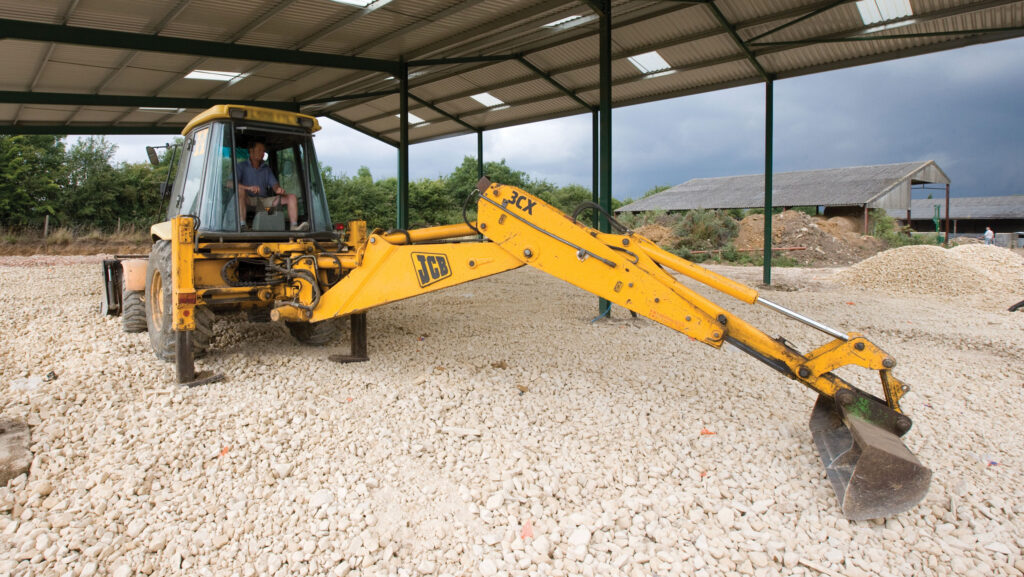Biodiversity net gain: Latest updates as small developments brought into regime
 © GNP
© GNP Small developments were brought into the biodiversity net gain (BNG) regime this week, two months after the legal obligation to enhance biodiversity by at least 10% was imposed on almost all but these sites.
The biodiversity uplift can be achieved on- or off-site, or, as a last resort, by buying highly priced statutory biodiversity credits from Natural England.
Once planning permission is granted, the biodiversity gain condition is imposed, with a Biodiversity Gain Plan submitted to and approved by the local planning authority (LPA) before work can begin on the development.
While the requirement for BNG is generally associated with housebuilding, industrial and commercial sites are affected. This means that farmers’ own developments are also under this obligation.
See also: Biodiversity net gain: legal issues for farmers
However, limited exceptions include developments carried out under permitted development rights (see panel “What is exempt from BNG requirements?”)
The legislation means that landowners are being approached to provide off-site habitat enhancement when developers cannot meet their BNG obligations on-site.
There are many models through which this can be achieved.
These range from the landowner assessing, creating and managing the site, then selling the units directly or through a broker, to leasing out the land for a term of at least 30 years to an operator for an up-front payment.
In practice, this last option usually involves the landowner also being paid to create the BNG units and manage the site, with the operator then selling the units on their own account.
What is exempt from biodiversity net gain requirements?
- Planning applications made before 12 February 2024
- Section 73 permissions where the original permission was either granted or made before 12 February 2024
- Retrospective planning permission made under Section 73A
- Development that does not impact a priority habitat and has an impact on less than 25 sq m of habitat or 5m of linear habitats such as hedgerows
- Householder development, e.g. home extensions, conservatories or loft conversions
- Self-build and custom-build applications which consist of no more than 9 dwellings on a site with an area not larger than 0.5 hectares
- Development of a biodiversity gain site
- Development related to the high-speed rail transport network
- Urgent crown developments
- Development granted planning permission by a development order including Permitted Development Rights.
Source: Robinson & Hall
Demand for biodiversity net gain units
The demand for BNG units is very difficult to assess.
A 2023 study for Defra put likely demand at 6,200 units a year, but advisers say that developers are making great efforts to achieve as much on-site mitigation as possible.
Certain planning obligations to provide green spaces, including play and recreation areas, can count towards a development’s biodiversity score.
Landowners with larger BNG sites should consider breaking these up into phases for establishment, with an element of different habitat types in each phase, suggests Nikki Beers of Faxton land and property advisors.
“This will be important, to manage cashflow and risk, and this will need to be shown on the establishment plans,” she says.
“Until we get a real feel for demand, I would advise that even with a site of 30 acres, for example, it would be advisable to split it into say three 10-acre phases.
“If things go well, you can always bring forward a phase, but you don’t want to be sitting on a 30-acre site having sold only a handful of units.”
Ben Sharples, a partner in law firm Michelmores, says that there are wildly different estimates of the size of the market.
He points out that just as landowners need certainty about the financial security of payments for BNG units and associated activities, developers will need to be sure that cash has been set aside by the landowner to create and maintain the habitat units.
Where large, off-site BNG areas are being created, the units on these will often be allocated to several developments or developers, he says.
“Traceability is all important in this context, to ensure there is no double counting and that if a habitat fails, for example, it is clear which units are linked to the failed area.”

© Tim Scrivener
BNG site register
Where BNG units are to be created, these must be put on the BNG register managed by Natural England so that developers can see what is available and in order to avoid units being double counted.
So far, there are just two entries on the Biodiversity Gain Site Register, one in Exeter, Devon and a second and one near Lewes in East Sussex.
Planning guidance on 10%
While the BNG requirement is for a minimum uplift of 10%, recently published government planning guidance discourages local authorities from adopting policies requiring more than the statutory minimum “unless justified”.
Some LPAs adopted BNG as a planning requirement prior to it becoming a legal requirement, and some in turn demanded more than a 10% uplift.
Responsible bodies
For most planning consents involving BNG, the legal obligation will be created by a planning condition through what is known as a section 106 agreement.
It is also possible to secure the legal agreement in a conservation covenant which must be registered with a “responsible body”.
Aside from Natural England itself, three companies are now officially recognised as “responsible bodies”. These are Harry Ferguson Holdings Ltd, Northumberland County Council, and RSK Biocensus.
Differences between LPA approaches and preparedness
Some councils are far more advanced in their biodiversity net gain (BNG) processes than others, says Nikki Beers.
In general, it is felt by advisers that funding issues and difficulty in attracting qualified ecologists mean that many local planning authorities are struggling to get things in place for the BNG regime.
Buckinghamshire is held up as an example for others to follow. It has an online site registration system and a draft section 106 agreement for use by applicants.
“However, they do require a reasonably significant amount of information upfront as well as a chunky registration fee to cover the local authority’s time in assessing the site and dealing with the legal agreement – quoted at £9,000-£15,000, which will be quite significant to landowners who wish to take a site forward themselves,” says Nikki.
Buckingham will only register sites that meet all of its criteria, one of which is that the site should deliver the best outcomes for biodiversity in Buckinghamshire, so there will be an element of site selection, she says.
A two-stage process weeds out unlikely sites at an early stage.
Smaller applications
Those making smaller planning applications and relying on the exemption that the biodiversity count will be reduced on less than 25 sq m of habitat still need to score the development site to establish this, advises planning lawyer Angus Walker, a partner in BDB Pitmans.
Change of use
An application for change of use from an office to residential, for example, does require the provision of BNB even if no physical development is envisaged, says Angus.
He points out that in most cases, the habitat score for the existing site will be zero as it will have been completely built upon and so no BNG will be needed.
However, if it is not zero, the existing habitat will provide for 100% of the biodiversity score, but the extra 10% will need to be found through improvement on-site or by finding off-site biodiversity gain land, he says.
